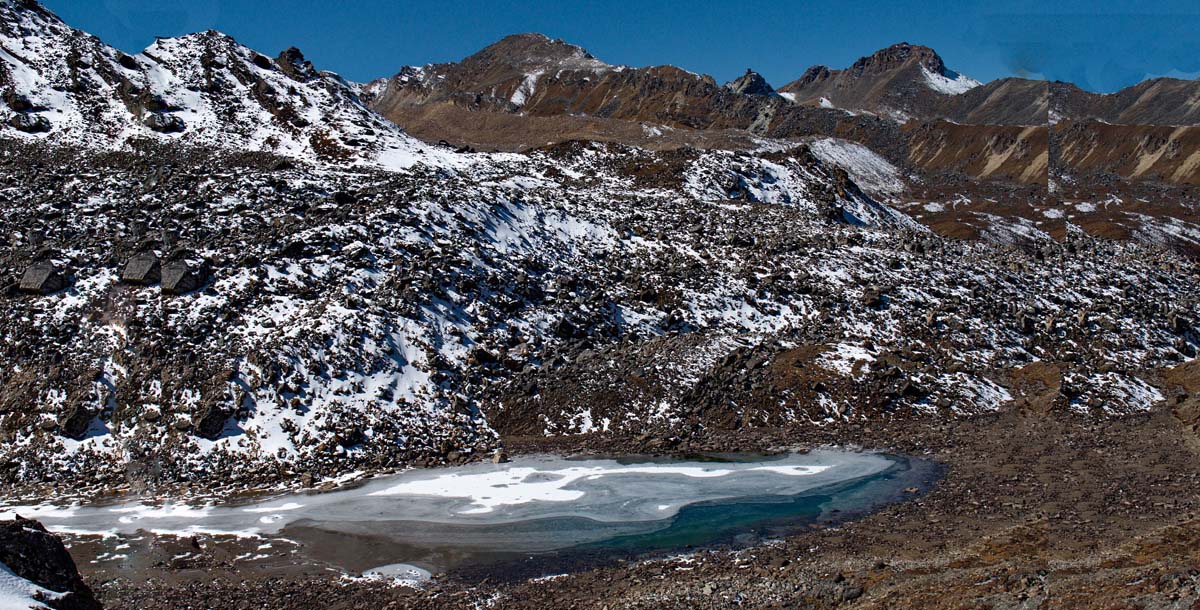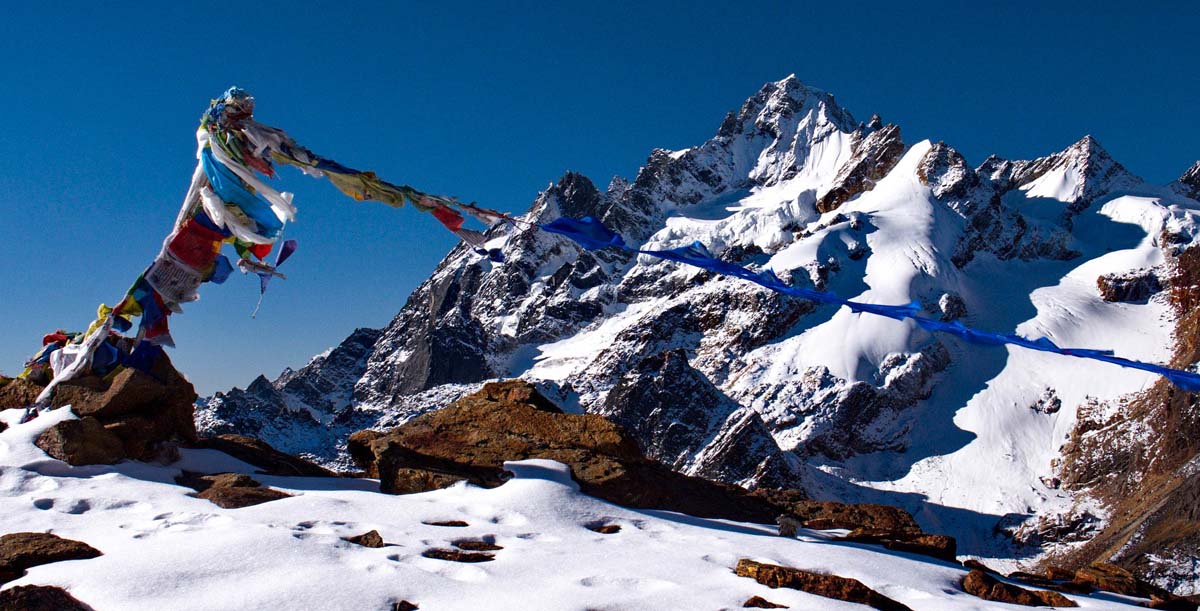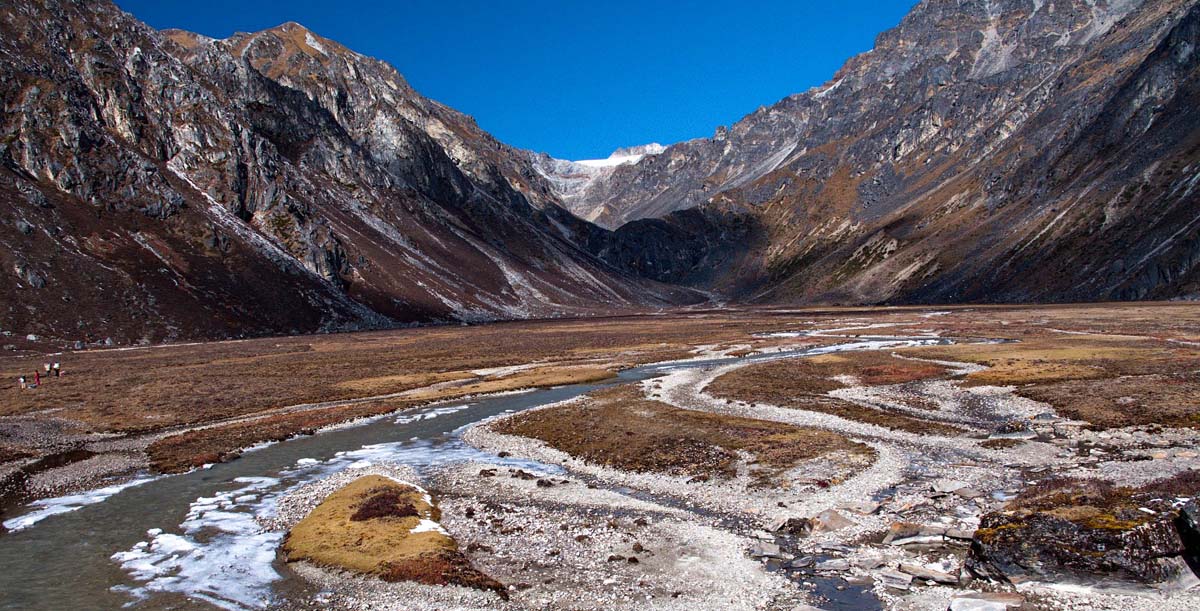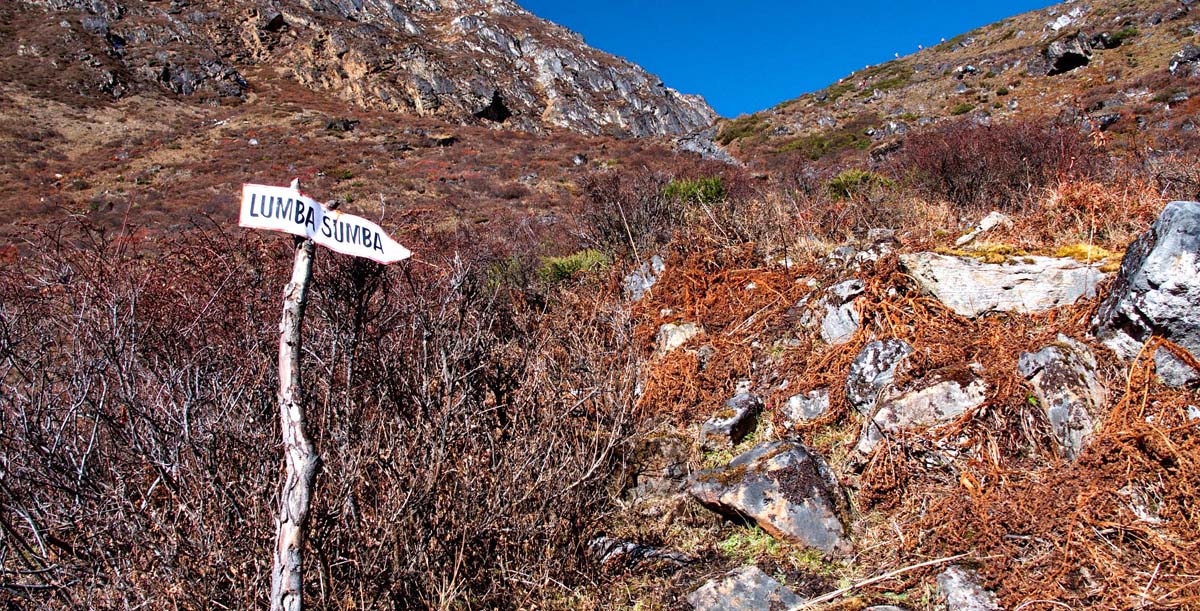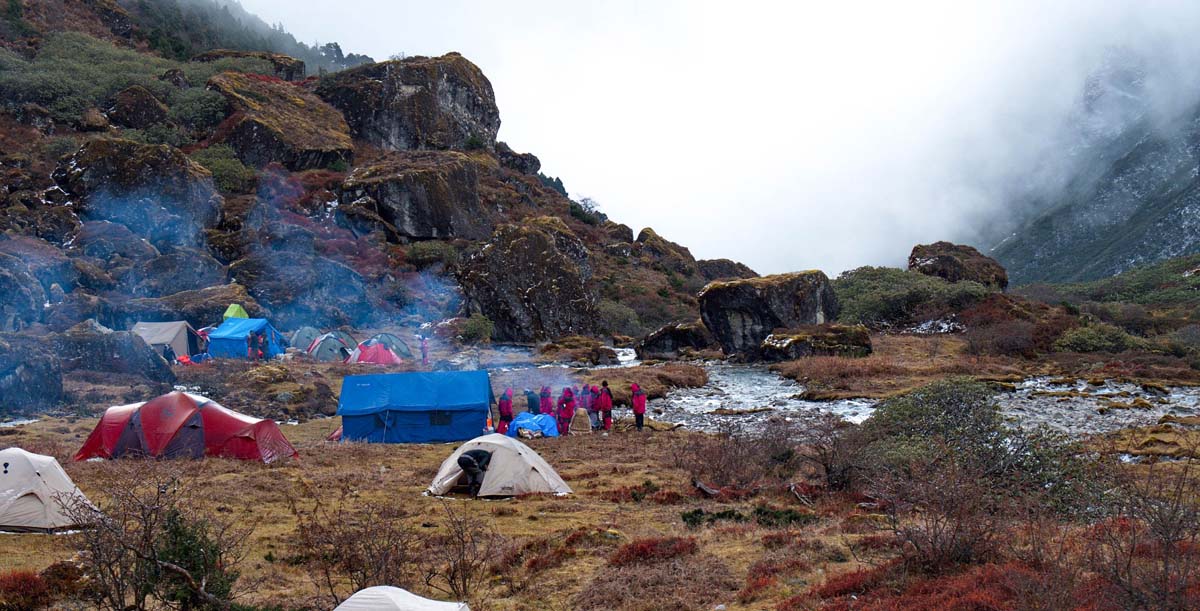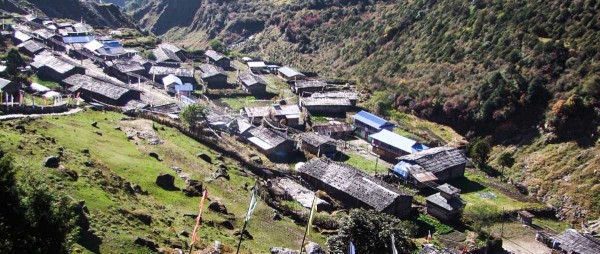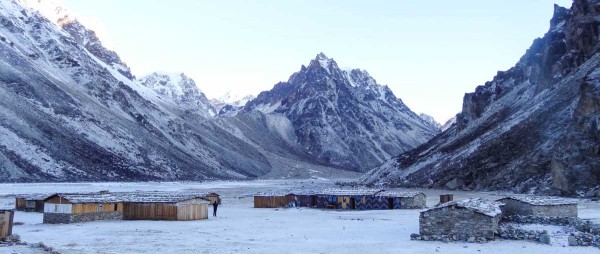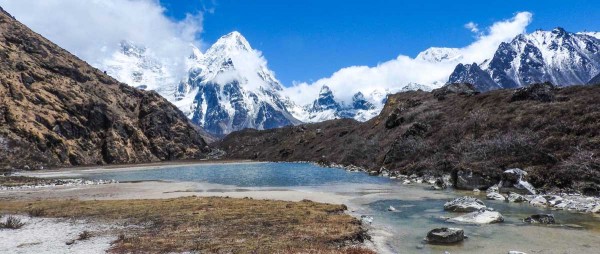Important Information
Region
Kanchenjunga Region Treks
Duration
20 Days
Max Altitude 5160m
Best Season April - November
Activity Per Day
5-6 hrs
Grade
Level 4
Group Size
2 - 20 people
Transportation Flight - Jeep
Lumba Sumba Pass Trek is part of the Great Himalayan Trail (GHT) which connects two trekking regions of Kanchenjunga and Makalu in eastern Nepal. This trek is a less-visited trek in Nepal because of the extreme remoteness and it is possible only with a camping trek. Himalayan Wander Walkers organize Lumba Sumba Trek by providing a veteran camping trek crew to make your dream trek a real Himalayan trip. This trek needs really good preparation. The best time to do Lumba Sumba pass Trek is from April to May in spring and from late September to mid-November in autumn. Every year during November, the Futuk festival is celebrated in Olangchung Gola.
Although this trek is challenging the rewards are incomparable with other treks. This trek offers you the breathtaking vistas of giant mountains including the 8000s meters Kanchenjunga (8,586m) in the east and Makalu (8,463m) in the north. Besides mountain views, you will also get in touch with the Buddhist monasteries, the authentic culture of highland people, and the traditional villages of Olangchung Gola. This area is also home to snow leopards and rare red pandas. The pass Lumba Sumba (5177m) itself is a scenic viewpoint from where you will view the Makalu range and Kanchenjunga range extending from eastward to westward.
Route of Lumba Sumba Pass Trek:
Lumba Sumba trek route starts by taking a flight to Bhadrapur and drive to Taplethok. Your trek starts from the Taplethok, a deep valley where the Ghunsa River flows, and heads toward the west via villages like Lelep and Olangchung Gola (one of the highlights of the trek). After spending a full day in Olangchung Gola, the route gets rough and wild where you will traverse the high pass of Lumba Sumba (5117m). Then the descending trek will enter the Makalu Barun National Park. You will pass through some cultural monuments like Chortens, monasteries, and Mani walls on the trekking route which are built to accumulate merits. Then slowly the altitude drops down and you will finish your trek at Num and drive to Tumlingtar. The next morning take a flight to Kathmandu.
Include
Arrivals and departure transport by car (We will collect you from the Kathmandu international airport) and transfer to Hotel.
Half-day sightseeing in Kathmandu (Boudhanath and Pasupatinath) with city guide and necessary transport.
3 nights’ accommodation (2 persons per room) in Kathmandu in a 3* standard Hotel with breakfast.
Kathmandu - Bhadrapur & Tumlingtar – Kathmandu flight ticket.
All land transportations (a private car/bus)
Full Camping trek with all meals and hot drinks during the trek serve by Cook and staff. Tented accommodation with dining, table, chairs, toilet tent, and shower tent. Salary, insurance, food, accommodation for guides, and porters. Supporters’ staff, cook, porters.
Kanchenjunga special permits and national park entry permits.
Makalu valley restricted area entry permits and Makalu Barun national park entry permits.
Group First Aid Kit.
Company Duffle Bag for luggage
Exclude
Meals & drinks during the trek and in Kathmandu (unless stated otherwise under ‘The trip cost includes’)
Personal trekking equipment
Travel/medical insurance
Emergency rescue evacuation
Phone calls
Internet
International air ticket
Tips for your trekking guide & porters at the end of the trek
If you’re forced to extend your trek due to bad weather or natural disaster circumstances, we are not liable to pay any compensation or otherwise be responsible for any expenses you may incur
Anything not mentioned in the ‘includes section’
Nepal entry visa Fee.
Important Information
* The Price given here is per person based on a minimum of 2 pax. The price will be cheaper with an increase in the number of people.
* Single Supplement is applied (incase if you are single)
CHECKLISTS FOR LUMBA SUMBA TREK
- Valid passport (valid for six months from the date of your trip)
- One other picture ID, such as driver’s license (in case of emergency and for use as a substitute of passport or in case of loss of your passport) Photocopy of passport page to carry in a wallet
- Air tickets (Make a copy of flight tickets which may be helpful, in case of loss)
- Visa Clearance (Make a copy of visa clearance which may be helpful, in case of emergencies)
- MasterCard, Visa Credit, and Debit Cards are accepted in Nepal. However, traveler's cheques and some cash are highly recommended.
- Mobile (if your cell phone is from CINGULAR USA or ATNT (USA) operators then your cell phone will work in Nepal.)
Guiding, Food, and Camping
In Nepal, all trekking supplies - camping equipment, kitchen implements, food - are all carried by pack animals like mules, Yaks, and horses. Even Porters are common in Nepal. All trekkers are accompanied by a guide, a cook, and usually at least one horseman or yak herder. With the surest footing; they lead trekking groups across the passes. The horseman and cook will usually run ahead during a trekking day. They will have prepared a packed lunch for hikers and will go on to the night’s resting place to set up camp. They set up tents, cook dinner, and ready the area for arriving trekkers. When trekkers reach the campsite they are greeted with a hot cup of tea and biscuits in the dining tent. After six hours in the mountains, no drink will ever taste sweeter. For dinner, the cook will usually prepare a buffet of dishes that are as welcome as they are delicious.
DRESS CODE FOR VISITING MONASTERIES, AND TEMPLES
- Shirt (either half or full sleeve)
- Full pants/long skirts
- Any type of shoes with socks
- No Hats, No Umbrella, No Slippers, No t-shirts, No short skirt, and No half-pants
- Photographs allowed in the courtyard only.
Note regarding itineraries
Although we generally adhere to the schedule, the itinerary is subject to change for numerous reasons beyond our control, including weather and terrain conditions, suitable campsite availability, and the group's general fitness level. It is important to understand that our trek is logistically complex and it is not unusual that adjustments be made. Our guide will orient you each evening to the following day's plan; their good judgment is the key to the long history of successful treks that Himalayan Wander Walkers has led till now. Please remember that our ability to make adjustments as needed helps to ensure that your trek is successful.
Frequently Asked Question
Although trekking gear is available in Nepal you are advised to bring your own gear.
Trekking or running shoes Camp shoes or thongs Socks (polypropylene)
Down or fiber-filled jacket Jumper or piled jacket Hiking shorts Waterproof jackets, poncho or umbrella Hiking pants T-shirts or blouses Underwear Sun hat
Rucksack Self Inflating Sleeping Mattress (optional) Water bottle Torch, batteries, and bulbs
Extra prices:
Let us help you decide Inquiry
